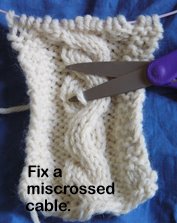.
This week in Understanding the Brain we are learning about modulation of voluntary movement. Our cerebellums are watching over us at all times, helping us learn to make new movements, helping us keep our gaze steady on an object despite the movement of our heads, helping the movements we make be smooth and coordinated, helping us adapt movements we know to new situations (walking on the beach is not the same as walking on concrete....), to name a few of the things our cerebellums do for us.
It won't surprise you to hear that all of this is complex and involved.
When your motor cortex tells your body what to do, it sends signals down motor neurons (possibly to other neurons) to your muscles. Our prof calls it a game of telephone -- one whispers a message to another, who whispers it to a third, who whispers it to a fourth....
It is the cerebellum's job to anticipate what should happen, and to make corrections if a movement starts to go awry. This morning I learned that when the motor cortex sends a message to a muscle, the motor cortex also sends a copy of that message to the cerebellum. Then the motor neurons which receive that message send a copy of what they received to the cerebellum. Then sensory neurons in your skin, muscles, and tendons send info to your cerebellum as to what is actually happening.
And your cerebellum takes in all of this info and makes corrections, so the actual movement can be as close to the intended movement as possible.
All in real time!
Isn't this amazing?
If you put the palm side of your hand flat against the base of your skull, so your thumb is where your skull meets your spine, your cerebellum is basically inside where your hand is. It's in there, busily helping you with pretty much everything you do on purpose, all day long.
Helping you do the things you know how to do, and helping you learn new things, like how to type, or how to use chopsticks, or how to walk on a treadmill with a split belt -- even when one of the belts is going much faster than the other one!
We were told that people even learn to walk on that treadmill if one of the belts is going BACKWARDS!
Amazing. Hooray for cerebellums everywhere!!!
The more I learn about neurobiology and genetics and epigenetics, the more astonished I am that we ever got it together to breathe oxygen, let alone to crawl out of the water onto the mud, let alone to walk and talk and knit and program computers!
That all of the incredible complexity which makes up each one of us just basically works, nearly all the time, blows my mind.
.
Tuesday, June 17, 2014
Subscribe to:
Post Comments (Atom)

















No comments:
Post a Comment